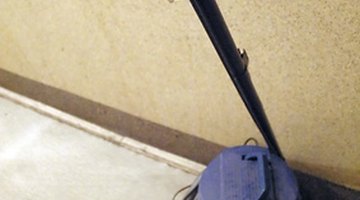How to Get Rid of Static in a Vacuum Hose
Static in a vacuum hose isn't so much caused by the hose, as it is caused by the surroundings where it is being used. The actual hose will conduct static electricity from other objects, and things like carpeting and dry households are static magnets.

The process is created by the friction between a vacuum hose and everything else it is rubbed against, which is particularly the case during vacuuming. This will create a static electricity charge that can be transferred to you or any other object the hose touches.
Things You Will Need
- Rubberized vacuum hose
- Spray bottle
- 1 tbsp. fabric softener
- Water
- Humidifier
- Commercial antistatic spray
-
Replace a plastic vacuum hose with an aftermarket rubberized hose. Unlike plastic, rubber does not conduct static electricity very well, so this change alone may eliminate static electricity from a vacuum hose.
-
Make an antistatic solution before vacuuming by mixing a tablespoon of fabric softener in a spray bottle full of water. Spray this solution on your rugs and carpeting to be vacuumed to cut down on static.
-
Run a humidifier in the room or area to be vacuumed. The moisture cuts down on static electricity in the air and on objects, which means it won't readily be transferred to the vacuum hose.
-
Spray a commercially made antistatic spray, which can be found at department and hardware stores. It can be sprayed directly onto and into the hose, as well as all the objects in and around the area to be vacuumed.
The Drip Cap
- Static in a vacuum hose isn't so much caused by the hose, as it is caused by the surroundings where it is being used.
- The process is created by the friction between a vacuum hose and everything else it is rubbed against, which is particularly the case during vacuuming.
- Make an antistatic solution before vacuuming by mixing a tablespoon of fabric softener in a spray bottle full of water.
References
Writer Bio
Dale Yalanovsky has been writing professionally since 1978. He has been published in "Woman's Day," "New Home Journal" and on many do-it-yourself websites. He specializes in do-it-yourself projects, household and auto maintenance and property management. Yalanovsky also writes a bimonthly column that provides home improvement advice.
Photo Credits
- vacuum cleaner image by vb_photo from Fotolia.com
- vacuum cleaner image by vb_photo from Fotolia.com
More Articles



